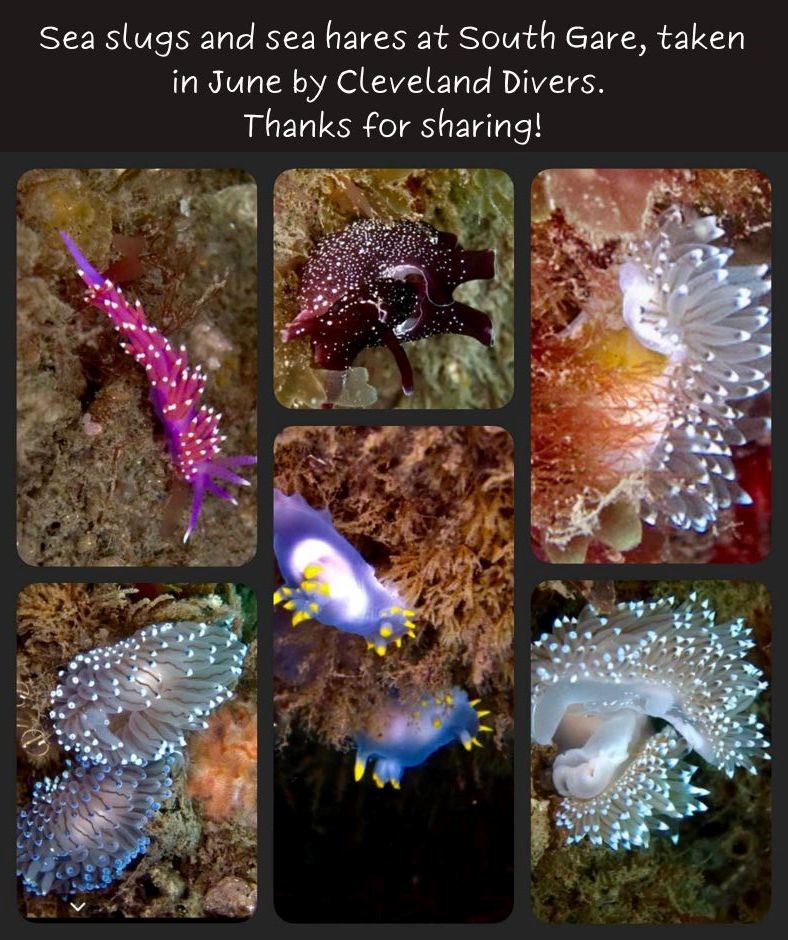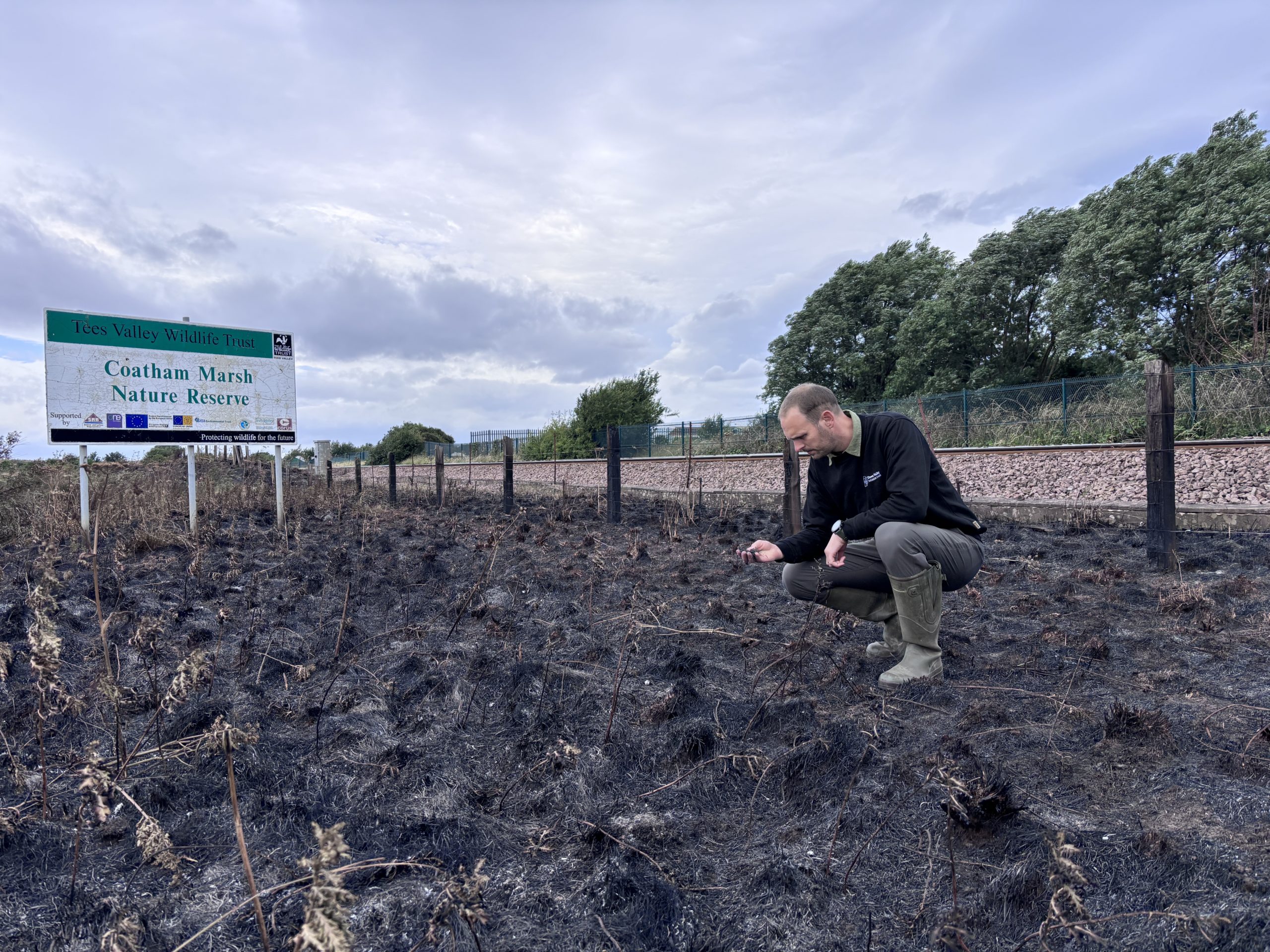Our Wilder Coast Project is gearing up for National Marine Week, which takes place from Saturday, 22nd July to Sunday, 6th August.
See the posters below to join in one of our events or campaigns and find out more about the work we do to protect our shores and seas.
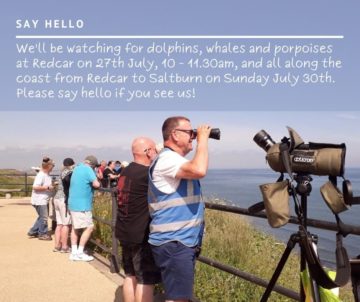
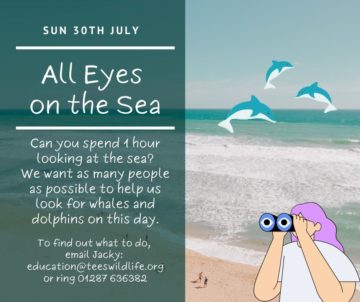
Discover ten surprising species found in the UK’s seas.
The UK’s seas are full of surprises. They’re home to some species you may expect would be more at home in tropical waters, and others you might never have heard of at all! We asked some members of Generation Sea, a group of young marine enthusiasts from across The Wildlife Trusts, to introduce some of their favourites…
Undulate ray
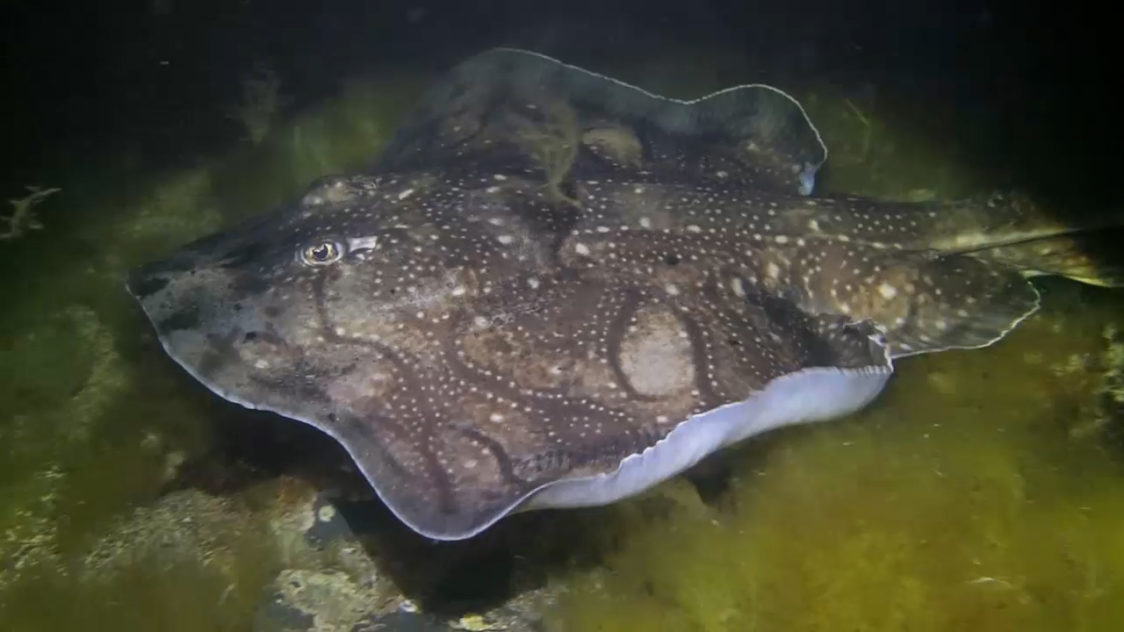
From Libby, Scottish Wildlife Trust
Hi! I’m Libby, and I’m a research and development intern in sustainable aquaculture at the Scottish Association for Marine Science and a volunteer young leader for the Scottish Wildlife Trust. I’m fascinated by the sea, its inhabitants, and the value they bring to people’s lives!
One particular species that I champion is the undulate ray. Although commonly referred to as a ray, this animal is actually a skate, with a smaller and thicker tail than a ray and no stinging capabilities. It lays eggs, also known as ‘mermaid’s purses’, which are made of keratin – the same composition as our nails and hair. These eggs can be found all year round, washed up on the coast or developing underwater.
Although they are locally common in some waters of the British Isles, the undulate ray is listed as endangered under the IUCN’s red list at a global scale. Fortunately, positive work is being done, including the citizen science project called the ‘Great Eggcase Hunt’, which was launched in 2003 by The Shark Trust. The project allows anyone that visits the shore to record eggcase sightings, helping to monitor sharks, skates and rays in our seas.
Bottlenose dolphin
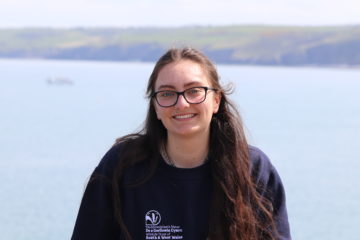
From Madeline, The Wildlife Trust of South and West Wales
I’m Maddy, a marine conservation intern at Cardigan Bay Marine Wildlife Centre, part of the Wildlife Trust of South and West Wales. Part of my role is to assist with marine mammal research in Cardigan Bay. This mainly focuses on bottlenose dolphins, conducting boat surveys to collect vital data on the semi-resident population here in the bay.
One of the reasons bottlenose dolphins are incredible is that they are ‘sentinels’ of the ocean – indicators of changing conditions in marine ecosystems. Also, bottlenose dolphins whistle to communicate with each other. Each has a unique signature whistle that is self-identifying, acting a bit like a name.
We research these incredible animals through photo-identification – taking images of their dorsal fins to identify them against a catalogue of known individuals using unique markings, like notches, scars, and discoloration patches – and acoustic recordings, identifying the use of echolocation and whistles, including their signature whistles. I love being involved in marine mammal research because I have the chance to assist with the conservation of marine wildlife, like bottlenose dolphins, that are vulnerable to the effects of human-made changes to the environment.
Gannet
From Katie, Somerset Wildlife Trust
I’m a volunteer with Somerset Wildlife Trust and I will be undertaking a research internship with them next year for my Master’s in Biological Science. Growing up near the coast, I have been fortunate enough to see how incredible marine wildlife is (even when that wildlife tries to steal my chips!). Additionally, studying biology at university has shown me how important marine ecosystems are for the environment and human society. As a result, I am passionate about marine conservation and eager to help protect these valuable but vulnerable species.
This is why I am championing the northern gannet, a seabird with spectacular diving abilities and a large appetite for fish. Gannets also form massive breeding colonies, which I have been lucky enough to see first-hand. However, these colonies have recently been devastated by highly pathogenic avian influenza, and this highlights why they deserve more attention.
Corkwing wrasse
From Arun, Hampshire and Isle of Wight Wildlife Trust
Hi, I am Arun, a volunteer and marine champion for Hampshire and Isle of Wight Wildlife Trust. I have taken part in Shoresearch intertidal surveys to monitor coastal species in the Solent since I was 11. I appeared on BBC Countryfile, along with our Shoresearch group, to talk about what I do and why I love it. The sea has always amazed me, and I wanted to protect it after hearing about the devastation that it faces.
The corkwing wrasse is a surprisingly beautiful species. It is a relatively small, brightly coloured fish that you can find around rocky shores. The males are a mix of reds, greens and blues, and the females are a dull, brown colour. The males build complex, spherical nests out of different species of seaweed. During the mating season, some sneaky males pretend to be females in order to slink past the nest’s guarding male for a chance to mate.
Seagrass
From Sam, Lincolnshire Wildlife Trust
Hi, I’m Sam and I am a marketing and communications assistant for Lincolnshire Wildlife Trust. My role involves managing the social media pages and website, and even taking a lead on marine communications for the Trust. Last year, I went on a once in a lifetime trip around Southeast Asia and Australia and saw the amazing work that was being done on the Great Barrier Reef and how important it was for our planet. I’ve always loved the sea, but this was the point I knew I had to come back home and do something about preserving it.
I have chosen to champion seagrass because I like unique things – and being the only flowering plant able to live in seawater and pollinate whilst submerged is pretty unique! It is also one of the most incredible resources this planet has for capturing carbon, doing so at a rate 35 times faster than tropical rainforests. I could talk all day about how amazing it is, but I think this point really emphasises its importance as a natural solution to tackle the climate crisis.
Sea hare
From Emma, The Wildlife Trusts
Hello! I’m Emma and I’m marine conservation officer with The Wildlife Trusts and marine volunteer with North Wales Wildlife Trust. As a volunteer I carry out Shoresearch surveys collecting data on what lives on our shores. This has introduced me to lots of amazing marine species, which is why I’m championing the sea hare. Despite looking like a sea slug, sea hares are actually a type of marine snail – but their shell is internal. To make it easier to find a mate they are hermaphrodites, which means they are both male and female. Did you know, a bit like octopus, sea hares can ink you with purple ink! Not many people realize that some of the smaller animals on our shores are just as fascinating as the large ones.
Honeycomb worm
From Lou, Cumbria Wildlife Trust
I’ve always loved getting out exploring the coast; whether it’s rockpooling, sea kayaking, wild swimming, or sitting on the beach painting, the sea is very special to me. Through my work with Cumbria Wildlife Trust, I can share that passion and teach others about the incredible wildlife on our coastline, including this amazing little creature: the honeycomb worm! Though they’re only small, honeycomb worms can build sandy tubes up to a metre high and several metres long, which form together into vast reefs. These reefs create habitat for many other creatures and even improve water quality, because the worms eat all of the dirt and impurities from the water, leaving it cleaner and clearer! Honeycomb worm reefs are nationally rare but can be found in abundance on the Cumbrian coast, especially in Allonby Bay, where a new Highly Protected Marine Area has been designated to protect marine wildlife and give it space to thrive!
Cuttlefish

From Gemma, Essex Wildlife Trust
My name is Gemma and I am the campaigns assistant for Essex Wildlife Trust. From early childhood memories of snorkelling on holidays, to undertaking a Marine Biology Masters degree, I have always been fascinated by the incredibly diverse and elusive marine life lurking under the waves. Cephalopods including octopus, squid and cuttlefish are a favourite of mine, all of which inhabit UK waters. The common cuttlefish looks like something between a squid and an octopus, with eight arms and two tentacles. I am in awe of their intelligence and ability to change colour and texture in a matter of milliseconds. Cuttlefish have an internal shell, called a cuttlebone, which you may find washed up on your local beach! Sizes may vary, but look for a chalky, white oval-shaped structure.
Basking shark
From Arran, The Wildlife Trusts
I’m Arran, youth activism manager at The Wildlife Trusts. I am fascinated by marine habitats and have always felt that looking out at the ocean inspires so much imagination and wonder. There are so many strange and spectacular species living off the coast of the UK and one of my absolute favourites is the basking shark.
Basking sharks are the second largest fish species on the planet, have a huge gaping mouth for feeding on zooplankton and can weigh up to 4.5 tonnes! They’re called basking sharks because they swim close to the seas surface, so it looks like they’re trying to bask in the sunlight. What could be more awesome than seeing one of these huge sharks cruising along at the sea’s surface with its massive mouth wide open? We are lucky to have them in our seas!
Minke whale
From Gemma, Cornwall Wildlife Trust
I’m Gemma, marine conservation apprentice at Cornwall Wildlife Trust. Originally from the Channel Islands, I’ve grown up stumbling over the rocky shore and snorkelling over beautiful reefs. My love of the ocean inevitably led to dedicating my professional ambitions to conservation. We’ve got some epic marine and coastal wildlife in the UK, from humpback whales to rainbow sea slugs; our seas are special.
One awesome species you can see is the northern minke whale. They’re baleen whales, which means that instead of teeth they have a series of frilled plates called baleen. They gulp big mouthfuls of water and use their baleen to filter out food. Minke whale vocalisations can be as loud as a plane taking off at over 150 decibels! We spot these majestic whales all year round, with over 100 sightings recorded in 2022.
